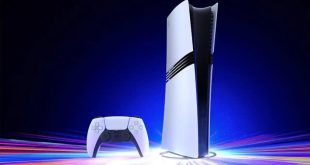This HD7970 arrives in a box with the same ‘Lord Of The Rings' style artwork we have seen before with other Asus graphics cards. An angry looking dude with giant sword takes centerstage on the front of the box. Not the greatest box artwork.
Inside, the product is protected under cardboard with thick foam side panels. Asus bundle several video and power converters, a Crossfire cable and literature on the product with a software/driver disc. As always we recommend you get the drivers direct from the AMD website as the files on the disc could be several revisions out of date.
The Asus HD7970 is based solely on the AMD reference design with ASUS branding on the cooler . The reference HD7970 has received a cooling upgrade, which is long overdue. The fan is wider, with a new blade design which is said to deliver lower noise emissions with enhanced cooling efficiency. Thanks to the wider blades, airflow has also been improved.
The Asus card is Crossfire capable in 2, 3 and 4 way configurations.
The HD7970 requires power from a 6 pin and an 8 pin connector.
The card is a dual slot design with a full sized DVI and HDMI port, and two mini Display Port connectors. It is Eyefinity capable and can power up to 6 displays. The HD7970 is the first GPU that can simultaneously output multiple, independent audio streams from the HDMI and mini Displayport connectors at the rear of the card. This is also the first GPU to support 3GHz HDMI with frame packing support for Stereo 3D.
The Tahiti core is protected under a partial cover. The memory onboard is high specification Hynix GDDR5. AMD are using a Chil controller, which is a dual loop 6+2 multiphase PWM design. This offers dynamic voltage control and features input voltage management, allowing up to three input voltages to be monitored to ensure adequate power is delivered to suit the load.
The HD7970 is built from 4.3 billion 28nm transistors.
This card features a dual BIOS toggle switch. Setting 1 is the unprotected mode allowing the end user to create their own bios configuration. Setting 2 is the factory default.
Holy power draw Batman. The system set up in a 3 way CrossfireX configuration. The HD7970 Tahiti core operates at 925mhz, and the 3GB of GDDR 5 memory runs at 1375mhz (5.5Gbps effective) which is connected via a 384 bit interface for over 264GB/sec of bandwidth. The card features 2,048 stream processors, is fully PCI E Gen3 compliant (up to 32 gb/s of data bandwidth) and incorporates new AMD Powertune and ZeroCore power technology. There are dual geometry engines, eight render back ends, 32 color ROPs per clock and 128 Z/stencil ROPs per clock.
 KitGuru KitGuru.net – Tech News | Hardware News | Hardware Reviews | IOS | Mobile | Gaming | Graphics Cards
KitGuru KitGuru.net – Tech News | Hardware News | Hardware Reviews | IOS | Mobile | Gaming | Graphics Cards















£1,500 just for the graphics cards, lol. Any chance you could offer that system up for a competition? 🙂
Thank you so much for the comprehensive comparison with other cards. You may choose a body part for me to kiss. I love having a lot of references in reviews.
lol, who is this article for, the rich and famous? one card is too much for most people I would imagine
Good article, shows that two is the best performance option really, unless you are chasing synthetic figures like in 3dmark11. thanks.
hard core ! wow
I really would have liked to have seen this trifire setup vs 6970 Trifire and 6990+6970 Trifire since that’s what many of us enthusiasts are rocking and we need to know how much needs to be spent to beat this performance.
I would have loved to have had time to test all that too, but unfortunately not this time.
Good review, I would wait for the custom asus card too, probably be £50 more, but if you are spending £500 its not a big deal. Asus made some great modded GTX580’s. they will do the s ame with the 7970, might be march though.
Great review. I always like reviews from KitGuru, particularly written by Zardon, many aspects and comparisons reviewed in detail.
If possible, please review the Asus HD 7970 DirectCU II (as single card), focus for game resolution 1200p or 1080p, please consider also Civilization V (with latest Catalyst, WHQL and Beta version), also compare performance of DirectCU II vs Accelero Xtreme 7970 (if it can be used on the Asus HD 7970 DirectCU II).
Not nit picking but the XFX DD uses a custom dual fan cooler slapped on a reference PCB, not a custom PCB as you said in the opening of your conclusion. Not saying a custom PCB would be better as some companies make their custom PCBs using cheaper materials (such as Power Color) than in the reference model to cut costs, but readers and potential buyers need to get the full picture.
Absolutely correct. My bad.